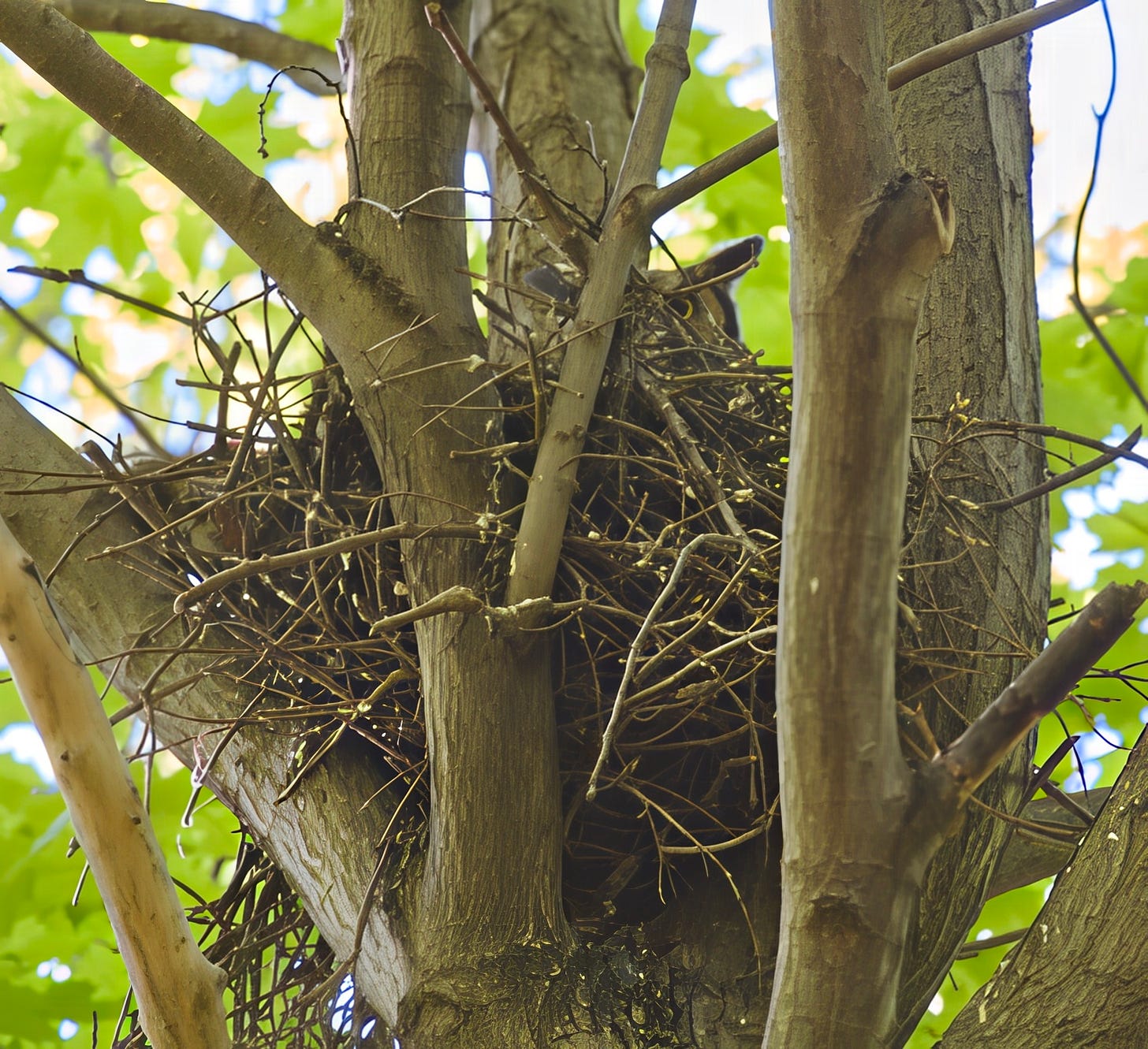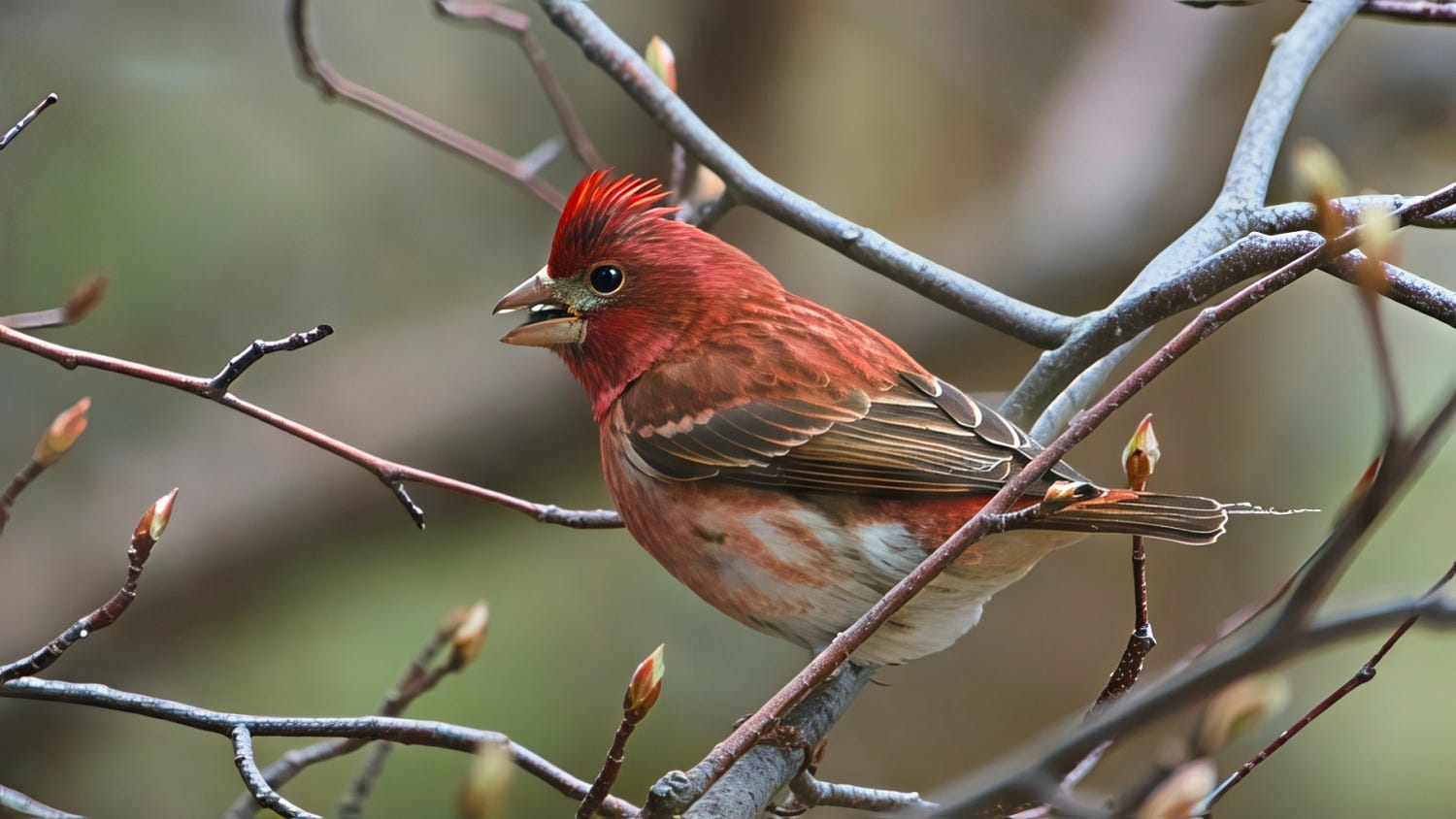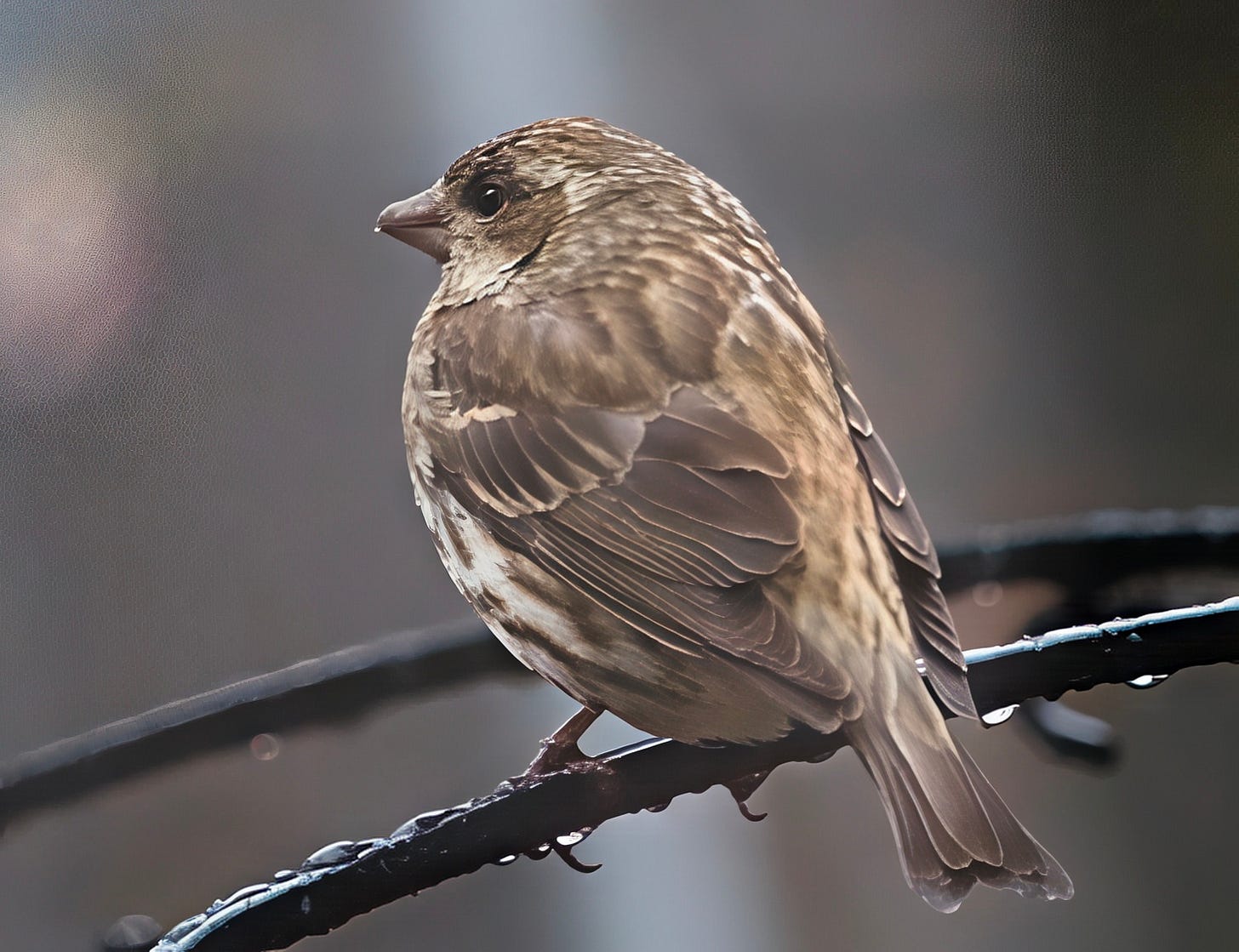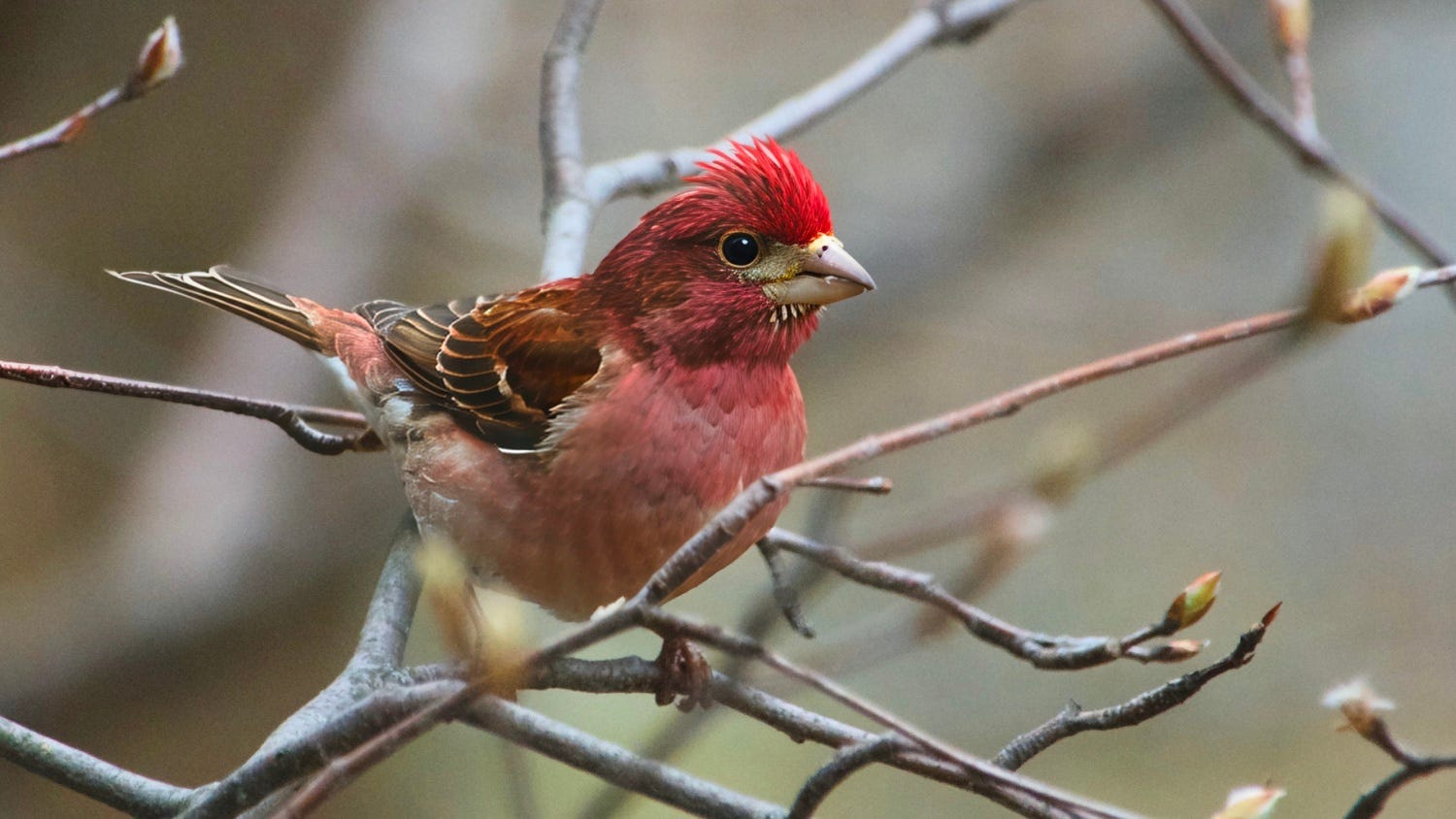Don’t worry - this Great Horned Owl was on its nest on this date, but a couple of years ago. I am always careful about revealing where owls are to be seen when posting photographs … nevertheless they are on the nest now if you can find one.
I keep a daily list of morning garden birds seen between 7am and 8am. I know, all very sad - eyes may be rolled. Anyway, as migration slowly starts to creak into action, this morning I noted some 17 species here in suburbia Five FOY species marked in bold.
Canada Goose (Branta canadensis) 2
Mourning Dove (Zenaida macroura) 2
Downy Woodpecker (Dryobates pubescens) 2
Blue Jay (Cyanocitta cristata) 2
Black-capped Chickadee (Poecile atricapillus) 1
Golden-crowned Kinglet (Regulus satrapa) 1
European Starling (Sturnus vulgaris) 2
Purple Finch (Haemorhous purpureus) 5
American Goldfinch (Spinus tristis) 7
Chipping Sparrow (Spizella passerina) 1
Fox Sparrow (Passerella iliaca) 1
Dark-eyed Junco (Junco hyemalis) 6
White-throated Sparrow (Zonotrichia albicollis) 1
Song Sparrow (Melospiza melodia) 1
Red-winged Blackbird (Agelaius phoeniceus) 2
Common Grackle (Quiscalus quiscula) 1
Northern Cardinal (Cardinalis cardinalis) 1
COMPOST
This newsletter is not just about wildlife and plants - we also enjoy wildlife gardening. Gardening, as well as a know, involves soil and that soil is better if augmented by compost. Here’s an interesting read:
https://www.lrb.co.uk/the-paper/v47/n07/fraser-macdonald/on-compost
Dowding devotes most of his attention to the method that, after 25 years of experimenting, I, too, have found to be the simplest and the best: the compost pile or heap. It couldn’t be easier. Put the dead things in a pile. That’s it. It helps to have a heap that’s a little bigger than, say, a dalek bin. Dowding bounds his with old pallets to form a kind of cube that holds a sufficient volume to retain heat and moisture. After that, the considerations are familiar to us as humans: does it have enough water, and a balanced diet of proteins (nitrogen-rich green things) and carbohydrates (carbon-rich brown things), perhaps with a bit of roughage thrown in to create air pockets? The process is faster if you keep an eye on the ratio of green to brown: three parts green waste to one part brown is a more useful rule of thumb than the technically ideal ratio of thirty parts carbon to one part nitrogen (lots of green waste is already carbonaceous and the exact C:N ratio of ingredients is obscure).









I don't think recording birds is sad at all - I think it is the people who don't notice anything around them that are sad. They are missing out on so much :-)
An impressive list of birds for an hour of viewing time. Those who would roll their eyes may wish to get out into nature more often.
Also, kudos on maintaining secrecy viv a vis nesting owls.
Cheers